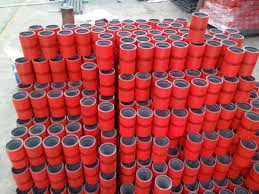- Afrikaans
- Albanian
- Amharic
- Arabic
- Armenian
- Azerbaijani
- Basque
- Belarusian
- Bengali
- Bosnian
- Bulgarian
- Catalan
- Cebuano
- Corsican
- Croatian
- Czech
- Danish
- Dutch
- English
- Esperanto
- Estonian
- Finnish
- French
- Frisian
- Galician
- Georgian
- German
- Greek
- Gujarati
- Haitian Creole
- hausa
- hawaiian
- Hebrew
- Hindi
- Miao
- Hungarian
- Icelandic
- igbo
- Indonesian
- irish
- Italian
- Japanese
- Javanese
- Kannada
- kazakh
- Khmer
- Rwandese
- Korean
- Kurdish
- Kyrgyz
- Lao
- Latin
- Latvian
- Lithuanian
- Luxembourgish
- Macedonian
- Malgashi
- Malay
- Malayalam
- Maltese
- Maori
- Marathi
- Mongolian
- Myanmar
- Nepali
- Norwegian
- Norwegian
- Occitan
- Pashto
- Persian
- Polish
- Portuguese
- Punjabi
- Romanian
- Russian
- Samoan
- Scottish Gaelic
- Serbian
- Sesotho
- Shona
- Sindhi
- Sinhala
- Slovak
- Slovenian
- Somali
- Spanish
- Sundanese
- Swahili
- Swedish
- Tagalog
- Tajik
- Tamil
- Tatar
- Telugu
- Thai
- Turkish
- Turkmen
- Ukrainian
- Urdu
- Uighur
- Uzbek
- Vietnamese
- Welsh
- Bantu
- Yiddish
- Yoruba
- Zulu
metric pipe couplings
Understanding Metric Pipe Couplings A Comprehensive Guide
In the world of piping systems, the efficient transfer of fluids is paramount. One essential component in these systems is the pipe coupling, which serves as a connector between two pipe segments. This article delves into metric pipe couplings, which are commonly used in sectors ranging from construction to manufacturing due to their standardized measurements and compatibility with metric-sized piping systems.
What are Metric Pipe Couplings?
Metric pipe couplings are specialized connectors designed to join metric-sized pipes. The term metric refers to the International System of Units (SI) measurement system, which utilizes millimeters (mm) as the primary unit for pipe diameters. A metric coupling typically features a defined outer diameter that matches the outer diameter of the pipe it is intended to connect. This compatibility ensures a secure fit and helps prevent leaks in fluid transfer applications.
Types of Metric Pipe Couplings
There are several types of metric pipe couplings available, each designed for specific applications and materials. Common types include
1. Compression Couplings These couplings allow for easy installation and disassembly, making them ideal for temporary connections or when frequent maintenance is needed. They use a compression ring to secure the pipe, ensuring a tight seal without welding.
2. Screw-on Couplings Also known as threaded couplings, these feature internal threads allowing them to screw onto the male threads of a pipe. They are often durable and suitable for high-pressure applications.
3. Welded Couplings Used primarily in permanent connections, these couplings are welded to the pipe for a strong and leak-proof bond. They are commonly used in industrial settings where the pipes may endure high stress and temperature variations.
4. Flanged Couplings These consist of two flanged ends that are bolted together, providing a robust connection that's particularly useful in larger pipes where high flow rates are involved.
Materials Used in Metric Pipe Couplings
Metric pipe couplings can be made from various materials, including
- Stainless Steel Renowned for its strength and resistance to corrosion, stainless steel is a popular choice in chemical processing and food industries
.metric pipe couplings

- Plastic PVC and CPVC couplings are lightweight, corrosion-resistant, and often used in plumbing systems for cold water applications. However, their thermal tolerance is limited.
- Bronze Offering excellent strength and corrosion resistance, bronze couplings are often used in marine applications.
Benefits of Using Metric Pipe Couplings
1. Standardization Since metric couplings adhere to standard measurements, they ensure compatibility across different systems and imports, reducing the need for custom fittings.
2. Ease of Installation Many metric couplings are designed for quick assembly, allowing for efficient installation and reduced labor costs in construction and maintenance.
3. Versatility With various types and materials available, metric pipe couplings can meet diverse application requirements, from low-pressure domestic plumbing to high-pressure industrial systems.
4. Durability High-quality metric couplings are made to withstand considerable stress, temperature fluctuations, and corrosive environments, contributing to the overall longevity of piping systems.
Choosing the Right Metric Pipe Coupling
When selecting a metric pipe coupling for your project, consider the following factors
- Diameter Ensure that the coupling matches the diameter of your pipes for a secure fit. - Material Choose a material that suits your specific application, considering factors such as exposure to chemicals and temperature. - Type of Connection Determine whether a temporary or permanent connection is required and select the coupling type accordingly.
Conclusion
In summary, metric pipe couplings are integral to ensuring efficient fluid transfer in various piping systems. Their standardized designs, coupled with the range of types and materials available, make them versatile options for numerous applications. Understanding their features, benefits, and appropriate usage can greatly assist engineers, contractors, and maintenance professionals in selecting the right coupling for their needs, ultimately resulting in improved system performance and reliability.
-
Tubing Pup Joints: Essential Components for Oil and Gas OperationsNewsJul.10,2025
-
Pup Joints: Essential Components for Reliable Drilling OperationsNewsJul.10,2025
-
Pipe Couplings: Connecting Your World EfficientlyNewsJul.10,2025
-
Mastering Oilfield Operations with Quality Tubing and CasingNewsJul.10,2025
-
High-Quality Casing Couplings for Every NeedNewsJul.10,2025
-
Boost Your Drilling Efficiency with Premium Crossover Tools & Seating NipplesNewsJul.10,2025







